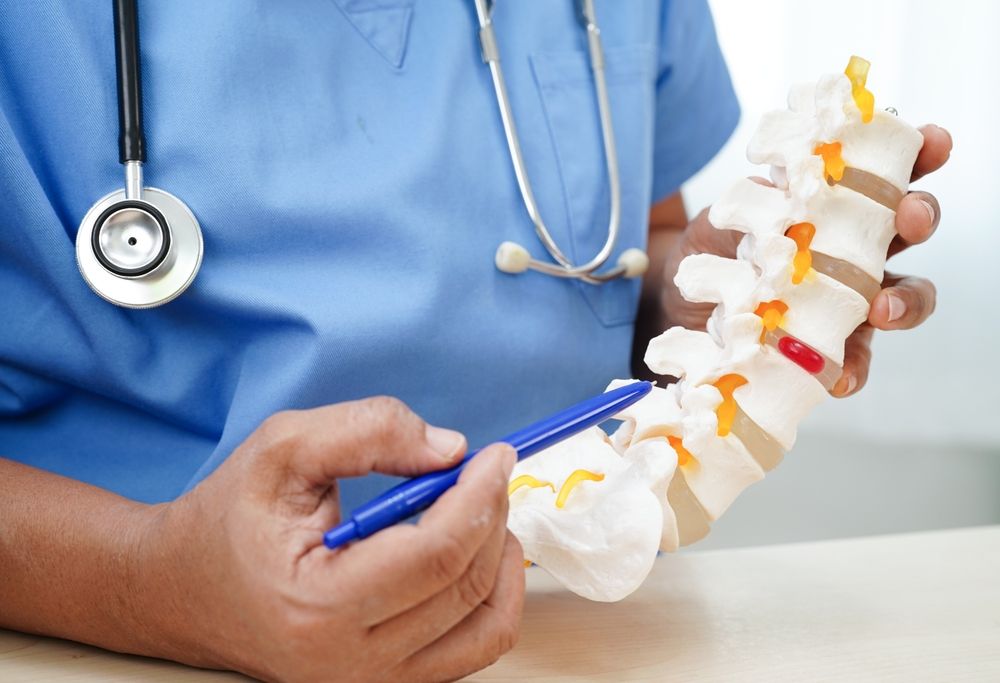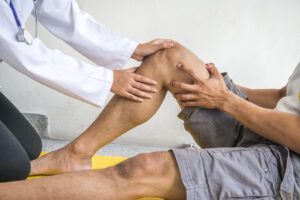Degenerative Disc Disease (DDD) is a common spinal condition that arises from the gradual wear and tear of the intervertebral discs over time. Despite the name, it is not technically a disease but a natural part of aging that can lead to discomfort and decreased mobility in certain individuals. These spinal discs act as shock absorbers between the vertebrae, and as they lose hydration and elasticity, they become less effective at cushioning the spine and allowing for smooth movement.
This degeneration can lead to chronic back or neck pain, stiffness, and in some cases, nerve irritation or compression that radiates pain into the limbs. The most commonly affected areas are the cervical (neck) and lumbar (lower back) regions. While not everyone with disc degeneration experiences symptoms, those who do may find that the pain impacts their quality of life and ability to perform daily activities. Fortunately, with proper diagnosis and targeted treatment, many patients can manage symptoms effectively without surgery.
Recognizing the Symptoms of DDD
Symptoms of degenerative disc disease can vary in intensity and duration. Some patients report a constant, dull ache in the back or neck, while others experience episodes of sharp or radiating pain triggered by activity. Pain often worsens with bending, twisting, lifting, or sitting for prolonged periods. Conversely, lying down or changing positions may provide temporary relief. In more advanced cases, disc degeneration may lead to spinal instability or impingement of nearby nerves, resulting in numbness, tingling, or weakness in the arms or legs.
Another characteristic of DDD is that the discomfort tends to fluctuate—patients might have periods of severe pain followed by weeks or months of little to no symptoms. Over time, the body may attempt to stabilize the spine by forming bone spurs (osteophytes), which can cause additional complications. Identifying these signs early and consulting with a spine specialist is important to prevent the progression of symptoms and develop a comprehensive treatment strategy.
Comprehensive Diagnosis at Premier Orthopaedics
At Premier Orthopaedics & Sports Medicine, P.C., with locations in Bloomfield, Englewood, and Union City, NJ, we take a personalized and detailed approach to diagnosing degenerative disc disease. Our evaluation begins with a complete medical history and physical examination, during which we assess flexibility, strength, posture, and any neurological symptoms. Listening to the patient’s description of their pain pattern helps us understand the severity and triggers of their condition.
Diagnostic imaging plays a vital role in confirming the presence of disc degeneration and ruling out other spinal disorders. MRI (Magnetic Resonance Imaging) is the preferred method as it provides a clear view of disc hydration, disc height, and any nerve compression. X-rays may also be used to evaluate spinal alignment and identify signs of osteoarthritis or bone spurs. Once we establish an accurate diagnosis, our team works closely with the patient to create a customized treatment plan centered on long-term relief and functional improvement.
Non-Surgical Treatment Options
For most individuals with degenerative disc disease, non-surgical treatments are effective in reducing pain and improving quality of life. At Premier Orthopaedics & Sports Medicine, we specialize in conservative care options that address the underlying causes of DDD while supporting the body’s natural healing process. Our goal is to help patients avoid surgery whenever possible by managing symptoms through an integrated and evidence-based approach.
Physical therapy is a key component of non-surgical management. Customized programs focus on strengthening core muscles, improving flexibility, and enhancing posture to relieve pressure on affected discs. Manual therapy, stretching routines, and targeted exercises are tailored to the individual’s condition and mobility level. In addition to physical therapy, medications such as non-steroidal anti-inflammatory drugs (NSAIDs) and muscle relaxants can help control inflammation and discomfort. These treatments often provide the relief needed to maintain an active and independent lifestyle.
Innovative Pain Management Techniques
In addition to traditional conservative methods, Premier Orthopaedics offers advanced pain management techniques designed to target specific sources of discomfort with greater precision. Epidural steroid injections, performed under fluoroscopic guidance, deliver anti-inflammatory medication directly to the irritated area around the affected disc or nerve root. These injections can provide lasting relief for several months and are particularly useful for patients who experience radiating pain.
Another innovative technique we offer is radiofrequency ablation (RFA), which involves using controlled heat to interrupt nerve signals that transmit pain from the degenerated disc. This minimally invasive procedure has proven effective in reducing chronic back and neck pain and can serve as an alternative to surgery for certain patients. We also offer nerve blocks and regenerative treatments, such as platelet-rich plasma (PRP) therapy, which promote tissue repair and reduce inflammation. Our multidisciplinary team carefully evaluates each case to determine which interventions are most suitable for the patient’s needs and goals.
Lifestyle Modifications and Home Care Strategies
Long-term management of degenerative disc disease involves more than clinical interventions. Patients play an active role in their own recovery through lifestyle modifications and self-care practices. At Premier Orthopaedics, we emphasize the importance of building healthy habits to support spinal health and minimize flare-ups. Simple changes in daily routines can have a profound impact on symptoms and overall mobility.
Patients are encouraged to maintain a healthy weight, which reduces strain on the spine and slows disc degeneration. Staying active through low-impact exercises like walking, swimming, or yoga can improve blood flow and promote flexibility. Proper posture and ergonomics at work and home—such as using supportive chairs and lifting correctly—can help prevent further disc stress. Regular stretching and applying heat or cold packs during pain episodes can also provide symptom relief. By adopting these strategies, individuals can take control of their condition and enhance their quality of life.
Practical Tips for Managing DDD at Home
- Use lumbar support cushions when sitting for long periods
- Avoid smoking, as it reduces oxygen supply to spinal discs
- Take regular breaks from sitting or standing in one position
- Sleep on a firm mattress that supports spinal alignment
- Manage stress, which can contribute to muscle tension and pain
Incorporating these practices into everyday life can complement medical treatment and reduce reliance on medications.
Our Personalized Approach to Spine Care
At Premier Orthopaedics & Sports Medicine, P.C., we are committed to delivering individualized, compassionate care to every patient we serve in Bloomfield, Englewood, and Union City, NJ. We understand that each case of degenerative disc disease is unique and that successful outcomes depend on tailoring treatment to the patient’s lifestyle, health goals, and pain level. Our team includes board-certified physicians, physical therapists, and pain management specialists who collaborate to provide coordinated and comprehensive care.
We believe that patient education is crucial. By understanding the nature of DDD and the options available, individuals are better equipped to make informed decisions about their care. Whether you are newly diagnosed or have been living with chronic disc-related pain for years, we are here to guide you through non-surgical solutions that prioritize safety, comfort, and lasting relief. If you’re struggling with the challenges of degenerative disc disease, we invite you to schedule an evaluation at one of our New Jersey clinics and start your journey toward better spinal health.
Resources:
Andersson, G. B. J. (1999). Epidemiological features of chronic low-back pain. The Lancet.
Freemont, A. J. (2009). The cellular pathobiology of the degenerate intervertebral disc and discogenic back pain. Rheumatology.
van Tulder, M. W., Koes, B., & Bombardier, C. (2002). Low back pain. Best Practice & Research Clinical Rheumatology.




